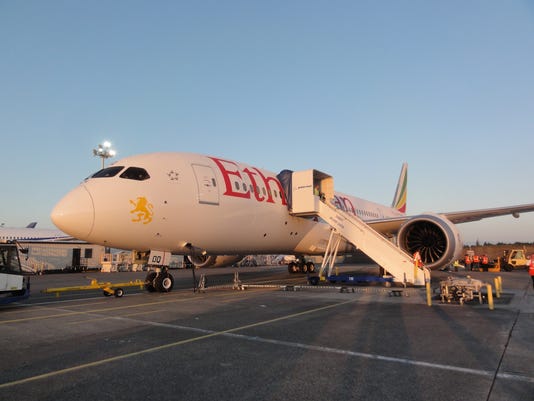Business Week this past week posted a story about Boeing’s 787 Dreamliner and the most recent issue that occurred. Whether it has been issues with the batteries catching fire or the most recent fire on the Ethiopian Air 787, it appears to me that poor project management is to blame. We continue to talk about risk management in our class, but if the Boeing project manager for the 787 was doing the job properly, then I would guess that the issue would have been fixed in January when the initial fire occurred. The article stated that Boeing redesigned the lithium ion battery packs, but last week’s fire on the 787 proved that their are possibly still issues with the 787 Dreamliner.
The incident last week caused Heathrow Airport to temporarily close some runways and re-route some flights. The costs for this latest incident will be large, not only due to the re-routing and delays, but to the share price in Boeing stock. It did seem like the response to the issue was very quick, so perhaps the risk management plan was ready for this type of scenario with a backup strategy in place. Officials were sent right away to check out the issue in person and tweets were sent right away to confirm that no one was hurt and calm the public.
On a side note, it was interesting to learn that the Boeing 787 Dreamliner was not built in the traditional manner, but instead completed subassemblies from suppliers were delivered to Boeing. The use of pre-installed systems shaved off time for the final assembly of the airplanes. In an industry where delivery time is huge, this can account for a large cost savings in the final project, especially since this could limit the amount of extra labor needed to complete a project on time. It doesn’t appear that this was a cause of the issues that the Dreamliner has seen, but it can be difficult to manage quality when you are sourcing from an outside company. As a manager you to decide between shorter time period of final project to market versus the extra costs incurred, but you also need to look at the extra risks that can occur as a result of outsourcing or shortening the time of individual activities in the production process.
I wonder what the Boeing risk management process was and if it was amended after the last fire that occurred as a result of the ion batteries used in the plane. Do you think that Boeing could have eliminated the risk of the most recent fire? Do you think that the Boeing project managers have worked through these technical issues with the 787 Dreamliner or do you expect that this will happen again?
http://www.businessweek.com/articles/2013-07-12/boeings-787-dreamliner-in-trouble-again-at-heathrow
http://www.usatoday.com/story/travel/flights/2013/07/12/london-airport-runway/2512393/

![[image]](http://si.wsj.net/public/resources/images/MK-CE096_WALFLU_G_20130618174350.jpg)